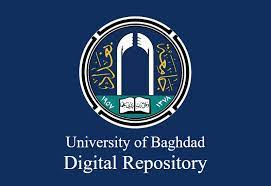The Impact of Computer-Based Learning According to the Practice and Training Method in Teaching Some Offensive Skills in Foil Fencing
DOI:
https://doi.org/10.54702/jbbt6k25Keywords:
Computer-based learning, practice and training method, foil fencingAbstract
The significance of this research emerges from enhancing the skill-based learning level in fencing, with an emphasis on offensive skills in foil fencing, which are considered some of the most difficult skills due to their requirement for precision, high focus, and speed of movement. Accordingly, using the appropriate educational method, such as computer-based learning following the practice and training method, can assist in performing the required movements and consequently improving the learners' proficiency in fencing. The research problem addresses skill performance, particularly offensive maneuvers in fencing, which demand a high level of understanding and focus during execution, as these maneuvers involve speed and precision. This necessitates breaking down the movements electronically via computer and subsequently training on each part through practice. Through this approach, the most challenging parts can be mastered. Based on the researcher’s experience in fencing and teaching methods, it has been observed that the learning level of offensive skills in foil fencing does not meet expectations due to the reliance on traditional teaching methods, which may not achieve the educational goal. Therefore, it has become necessary to adopt modern educational technologies through electronic learning programs that help learners understand the components of the movement and apply them through practice and training, which could correct the educational trajectory for the better in learning offensive skills in foil fencing. The research objectives were to identify the impact of computer-based learning according to the practice and training method in teaching some offensive skills in foil fencing. The research concludes that computer-based learning, according to the practice and training method, holds significant importance both theoretically and practically in teaching some offensive skills in foil fencing. Recommendations of the research strongly emphasize the adoption of computer-based learning, integrating both theoretical and practical training approaches, due to its significant importance in teaching offensive skills in foil fencing. and this achieves one of the sustainable development goals of the United Nations in Iraq which is (Quality Education).
References
Al-Far, I. A. K. (2002). Using computers in education (1st ed.). Dar Al-Fikr.
Al-Rifai, I. (2006). Computers in learning and education (1st ed.). Al-Yamamah Educational Foundation.
Al-Abadi, H. A. R. K. (2015). Fundamentals of writing scientific research in physical education and sports sciences (1st ed.). Al-Ghadir Printing and Publishing Company.
Hussein, Z. S. (2019). The impact of an educational curriculum based on the format model on the development of reflective thinking and learning basic and compound offensive skills in fencing for female students (Master's thesis). University of Karbala.
Ismail, S. M. (1996). The impact of training methods on developing explosive strength of the legs and arms in long-range shooting accuracy in high jump in handball (Doctoral dissertation). Baghdad.
Al-Qawqazah, S. S. A. (2015). The effect of a program using computers in maximizing academic learning time and learning some types of shooting in handball. Al-Azhar University Journal, 1(165).
Al-Haik, S., & Adeeb, S. (2006). Comparing the impact of using computers in teaching physical education curricula on students' attitudes toward it at the University of Jordan and Hashemite University. King Khalid University Journal, Saudi Arabia.
Ismail, Dh. H. (2002). The interleaved training method and its effect on learning and development through spatial organizational options for the tennis learning environment (Doctoral dissertation, University of Baghdad, College of Basic Education).
Al-Mousa, A. et al. (2006). E-learning: Foundations and applications. Data Network Foundation, Riyadh, Saudi Arabia.
Amair, O. (2009). The effect of a proposed curriculum using programmed learning on the skill performance level of some gymnastics skills (Doctoral dissertation, Faculty of Physical Education, University of Jordan), p. 31.
Sabr, Q. L. (2005). Topics in motor learning. University Press, Baghdad.
Al-Tawalbeh, M., & Al-Jizawi, A. (2004). The effect of using computers as a tool in helping fifth-grade students discover the concept of color. Journal of Educational and Psychological Sciences, University of Bahrain, 5(2).
Zaid, N. A. (2011). Learning and motor learning (1st ed.). Al-Najaf Al-Ashraf: Al-Dhiaa Publishing.
Mohnsen, B. (2001). Using instructional software to meet national physical education standards. Journal of Physical Education, Recreation and Dance, 72(3), 19-22.
Mosston, M., & Ashworth, S. (1999). Teaching physical education (4th ed.). New York.
Downloads
Published
Issue
Section
License
Copyright (c) 2024 Modern Sport

This work is licensed under a Creative Commons Attribution 4.0 International License.















